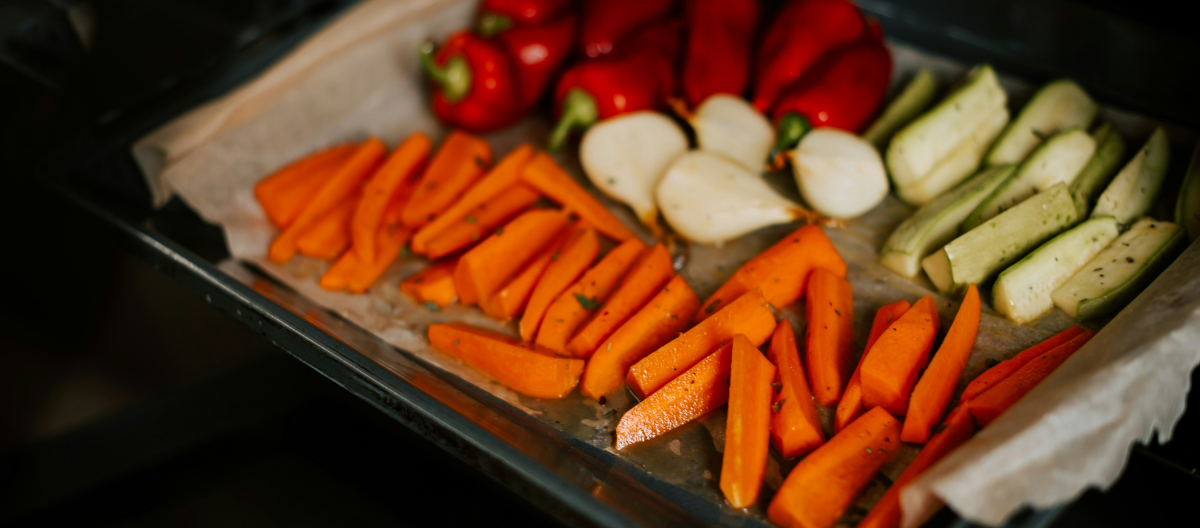Sautéed vegetables are a quick and flavorful way to prepare a variety of fresh produce. They make a great side dish or can be added to salads, grain bowls, and more. Here’s a basic guide to sautéing vegetables, along with some tips and variations for different flavor profiles.
Basic Sautéed Vegetables Recipe
Ingredients:
2 tablespoons olive oil (or other cooking oil of your choice)
1 medium onion, sliced or chopped
2-3 cups mixed vegetables (such as bell peppers, zucchini, carrots, broccoli, or green beans)
2 cloves garlic, minced (optional)
Salt and pepper, to taste
1 teaspoon dried herbs (such as thyme, oregano, or rosemary) or 1 tablespoon fresh herbs (such as basil or parsley)
1 tablespoon soy sauce or balsamic vinegar (optional, for extra flavor)
Instructions:
Prepare the Vegetables: Wash, peel, and chop vegetables into uniform pieces to ensure even cooking. Harder vegetables like carrots and potatoes should be cut smaller to cook at the same rate as softer vegetables.
Heat the Oil: In a large skillet or sauté pan, heat the olive oil over medium-high heat. Allow the oil to get hot but not smoking.
Cook the Onion: Add the sliced onion to the pan and cook for 2-3 minutes until it begins to soften and become translucent.
Add the Vegetables: Add the chopped vegetables to the pan. Stir frequently to ensure even cooking and prevent burning. If using garlic, add it during the last minute of cooking to prevent it from burning.
Season: Sprinkle salt, pepper, and dried or fresh herbs over the vegetables. Stir to combine. If desired, add a splash of soy sauce or balsamic vinegar for additional flavor.
Sauté: Continue to cook the vegetables, stirring occasionally, for about 5-10 minutes or until they are tender and have a slight caramelization. Cooking time will vary depending on the type and size of the vegetables.
Serve: Remove from heat and serve immediately. Sautéed vegetables can be enjoyed on their own or as part of a larger dish.
Tips for Perfect Sautéed Vegetables
Uniform Size: Cut vegetables into similar sizes to ensure even cooking.
Don’t Overcrowd: Avoid overcrowding the pan, as this can cause the vegetables to steam rather than sauté. Cook in batches if necessary.
Adjust Heat: If the vegetables are browning too quickly, lower the heat to prevent burning.
Add a Splash of Liquid: For extra flavor, add a splash of vegetable broth or wine during the last few minutes of cooking.
Finish with Fresh Herbs: Adding fresh herbs at the end of cooking preserves their flavor and adds a burst of freshness.
Variations and Flavor Profiles
Mediterranean Style: Add sliced olives, sun-dried tomatoes, and a sprinkle of feta cheese. Season with oregano and basil.
Asian-Inspired: Use sesame oil instead of olive oil and add a splash of soy sauce and a sprinkle of sesame seeds. Garnish with chopped green onions and cilantro.
Spicy Kick: Add a pinch of red pepper flakes or a dash of hot sauce for a spicy kick.
Garlic and Parmesan: Toss the vegetables with minced garlic and finish with freshly grated Parmesan cheese for a savory touch.
Sweet and Savory: Add a drizzle of honey or maple syrup and a sprinkle of cinnamon for a sweet and savory twist.


